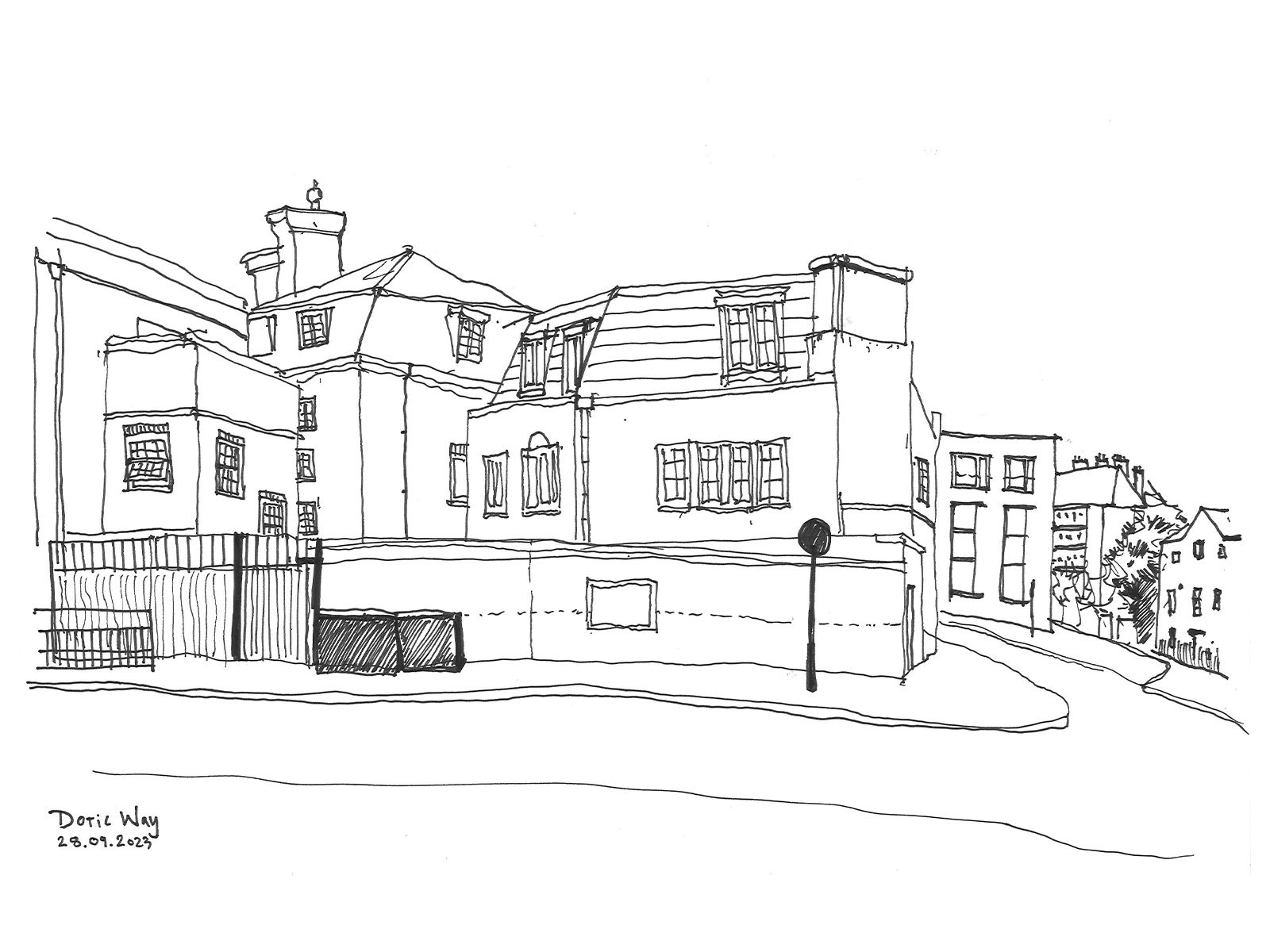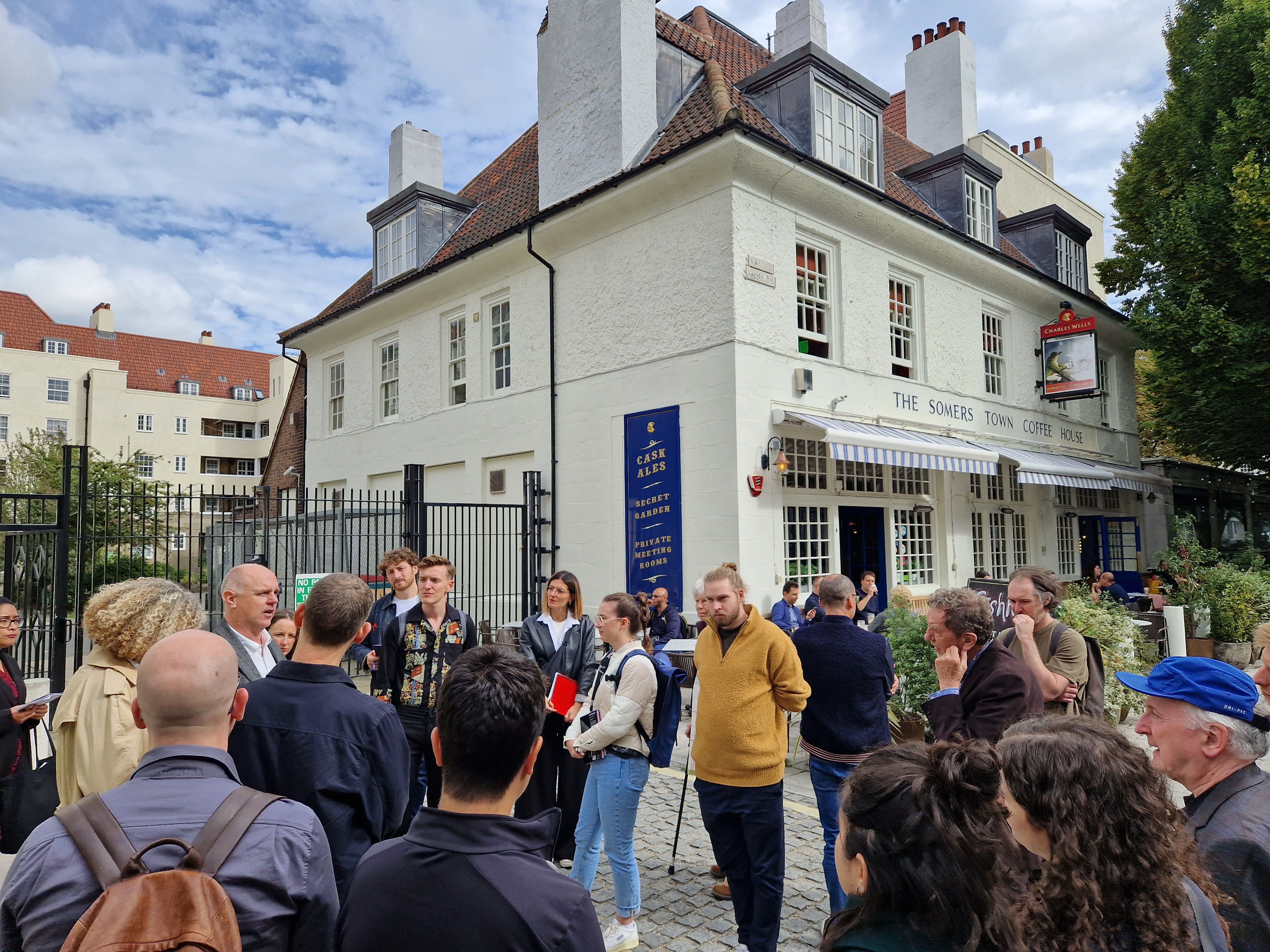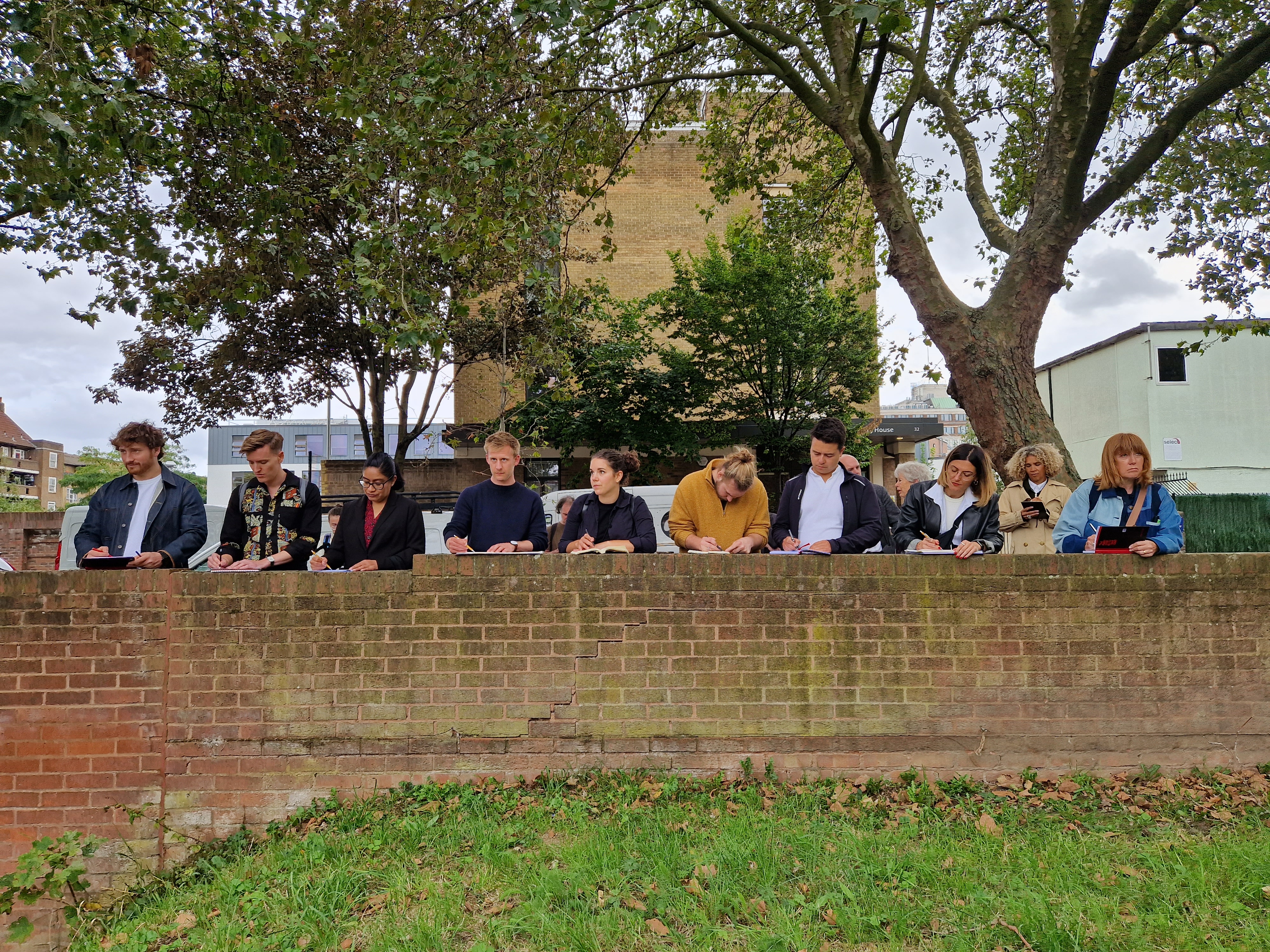Our September conference celebrated social housing with quick-fire presentations, a sketching tour and a keynote lecture - putting homes for everyone firmly back on the agenda
Globally, in terms of built form, social housing is the single most ubiquitous pattern of urban development we have. Social housing drives innovation and change in architecture, urban design and planning wherever it is found. And social housing – in one form or another - is everywhere. Barring shanty towns it’s where most of the world lives. Yet there is always a need for more. According to WEF, the world needs to build 96,000 new affordable homes every day to house the estimated three billion people who will need access to adequate housing by 2030, UN-Habitat says. Welcome to PTE’s September 2023 Conference Day: Social housing – homes for everyone back on the agenda.
Dover Court’s social housing
These were among writer and critic Rory Olcayto’s opening words when introducing the programme– quick-fire presentations, a sketching tour and a keynote lecture - before handing over to partners Tricia Patel and Charina Coronado, for an overview of our recently completed Dover Court. In terms of social housing, it is an architectural tour de force.
Tricia explained how, working closely with the London Borough of Islington, we drew upon wide-ranging skills – in co-design, retrofit and re-use, multigenerational planning, and landscape-led placemaking – to repair and improve the 1960s-built estate, and to blend it more effectively into its wider Georgian setting while infilling it with 70 new homes, almost all of them social housing.
Charina focused on detail, from how new homes were threaded around and in between extensive underground utilities infrastructure identified through early provider engagement and site analysis, to how building new homes on demolished, unused garages, unlocked a landscape strategy for the whole estate.

Social housing around the world
Next up, a global social housing tour: eight quickfire presentations by colleagues, each a celebration of projects in their home countries.
Lorcan Little highlighted Singapore where 80 per cent of the population live in government housing and where vast complexes like the soaring three tower Skyville @ Dawson, turns out to be a public housing project commissioned on a strict public sector budget.
Charina focused on Australia’s mid-60s’ project houses boom - ‘affordable’ architect-designed houses a cut above the speculative build market. She picked out Melbourne’s Merchant Builders, whose offer of landscape, indigenous planting, site planning, and interiors as a total package, built out designs by architect Graeme C. Gunn.
Joe Stancer discussed his childhood in ‘third wave’ new town Peterborough, a sister site to Milton Keynes, and like Scotland’s Cumbernauld, heavily influenced by 1963 Government report Traffic in Towns which preached separation of pedestrians and cars. Think Parker Morris standards, dual carriageways and ‘crazy mono-pitched homes.’ But doorstep play and communal courtyards too, courtesy of the Peterborough Development Corporation.
Federica Sedda trawled through postwar Italy and the ‘neo-realist’ architecture of its national public housing programme INA Casa. Federica explored one of its first projects, the influential and self-consciously vernacular Tiburtino neighbourhood, masterminded by Ludovico Quaroni (urban planning) and Mario Ridolfi (architecture).
Daniel Forte looked at Argentina’s Procrear Plan, a Government-backed programme providing families with credit to purchase state-built homes. The versatile scheme allows provincial governments to run competitions for local architects to adapt housing designs to local conditions throughout Argentina.
Gloria Vargas Palmer’s wide ranging talk was peppered with jaws-dropping facts: Mexico has 35 million houses and more than half - 57.3% - are self-built homes. But it included intimate studies too, like her portrait of Casa Eva in Ocuilan, a small, elegant house with a vaulted ceiling and a double-height kitchen, designed by architect Fernanda Canales pro bono for Eva Gomez and her five children, after they lost their home in a 2017 earthquake.
Paul Hohnen took us back to Australia, Sydney this time, with his sordid tale of Sirius, a high-quality Brutalist social housing scheme on a prime harbourside site that has been recently ‘cleansed’ of its rightful occupants for development as private housing. It happens here too, of course. But does anyone ever feel good about this?
BIM manager Laura Binaburo concluded our global tour with a look at Tatiana Bilbao’s design-coded masterplan for Aguascalientes and a plot being developed with Infonavit, Mexico’s federal institute for worker's housing, alongside six local and international architects commissioned through competition.

Gloria Vargas Palma - Social Value Design Research Associate, Lorcan Little - Architectural assistant, Laura Binaburo - BIM Manager, Joe Stancer - Architectural assistant, Charina Coronado - Partner, Daniel Forte - Senior architect, Federica Sedda - Architect, Paul Hohnen - Senior architect
Sketching tour in Somers Town
An after-lunch sketching tour with Patrick Devlin took us to Somers Town, one of central London’s few remaining working class neighbourhoods. Tucked in between St Pancras and Euston stations, and with social housing projects from the Victorian, inter-war, post war and contemporary era, it is, according to critic Rowan Moore, a ‘parallel universe of public housing ideas over the decades.’
The tour kicked off in Churchway, extensively rebuilt by the LCC in 1899 to ease overcrowding. As the cohort began drawing, Patrick unpacked the history of ‘social housing’ in Somers Town: how it first emerged in the 1840s and how, by the time the six-storey, steel-frame, deck access complex called Ossulston Estate (1926-1937) – our next sketching stop - was built, housing for low income people was an established driver of architectural style and building innovation.
This was evident when we sketched Peter Tábori’s striking Oakshott Court. Patrick explained that it was designed for the London Borough of Camden in the mid-70s, under the guidance of low-rise, high-density, social housing advocate Sydney Cook, and that its L-shaped plan and stepped terrace provide more than a hundred homes, some flats, some maisonettes.
Before returning to Diespeker, Patrick outlined the Central Somers Town CIP - Camden’s Community Investment Programme masterplanned by DSDHA - and studied two of its completed buildings, the Stirling-Prize shortlisted Adam Khan Architects’ community hub (with a rooftop play-space not unlike our own Deptford Lounge) and Hayhurst and Co’s new primary school. Both are fitting and welcome additions the civic townscape of Somers Town.
Keynote lecture: The Design of Public Housing - Architects' Intentions and Users' Reactions
Our final session was a keynote lecture by Jane Darke, the celebrated writer, housing expert, university lecturer and member of feminist design collective Matrix. Jane, who has written extensively on the built environment, gained a BA in Architecture in the 1960s and went on to research architects’ approaches to designing social housing. After a spell as a housing manager she taught housing and planning to students for many years at Sheffield University. Her lecture presented rarely seen research, undertaken in the 1970s, on the relationship between residents, architects and housing estates.
The work formed part of her unpublished PhD, completed in 1982. Jane’s research centred upon six architecturally interesting estates, low and high rise, and medium to high density, interviewing architects about their design aims and tenants for their feedback on the schemes as built. The tenants' evaluations of their homes and neighbourhood in retrospect, is clearly an early, invaluable, example of POE. Its increased relevance today need not be baldly stated.
Of the six estates, Jane found that Linden Grove (by Neyland & Ungless) and Pollards Hill (by Richard MacCormac) were generally well liked, Dawson's Heights (by Kate Macintosh) then Marquess Road (by Darbourne & Darke) were not far behind, while Kedleston Walk (by Douglas Stephen & Partners) and Robin Hood Gardens (by Alison & Peter Smithson) were generally criticised and disliked.
Sadly, Jane’s research and her focus on architects' intentions and users' reactions portrayed an almost too positive reading of Britain’s social housing landscape just as the incoming Thatcher government was planning to dismantle the sector with its Right to Buy policy.
Parallel research, such as Alice Coleman’s Utopia on Trial, which shored up the government’s plans by decrying postwar housing as ‘dystopic’, would instead help to shape British housing policies – which stymied the social housing sector for decades. We were, of course, very happy – and privileged – to be able to share it, given its renewed relevance, as social housing is once again centre stage.
The conference ended following an open-floor discussion with Jane and her husband, architect and planner Roy Darke.
Moments later it was time for drinks, and the end of summer party in the Diespeker courtyard... cheers!











